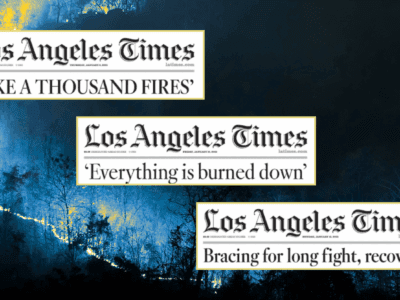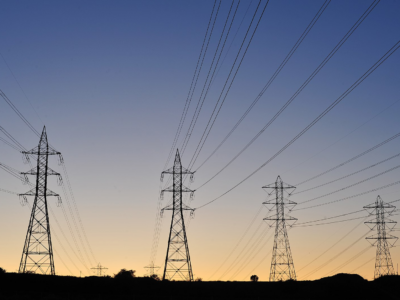Filling the gaps from CEQA reform
California has long leaned heavily on CEQA to cover gaps in other environmental laws. That will have to change when we reform CEQA.
California has enacted a major reform for CEQA, creating a substantial exemption for infill urban housing. I’ve written why this is, on balance, beneficial for housing and the environment. But I also want to highlight a pitfall as the state continues looking at future reforms for CEQA. California has long relied on CEQA as a gap-filler for its other environmental laws. As the state pares back CEQA, it should look at where it needs to update other state environmental laws to fill in gaps, where appropriate.
State Senator Scott Wiener and Assemblymember Buffy Wicks have been the main leaders in the state legislature in pushing for updating CEQA to facilitate housing and building a clean energy infrastructure. In this interview, Senator Wiener emphasizes that he thinks the environmental downsides of CEQA reform are relatively minimal because:
First of all, outside of CEQA, California has very strong environmental laws, like it’s protecting clean air and clean water, endangered species. We have really strong statutes. We have strong agencies that issue strong regulations. We have all sorts of regulations they have to comply with.
There is much truth to this statement. But it is also true that California has legislated and developed its environmental laws in part based on the background principle that CEQA was present. Here is one key example, drawn from an article I wrote a few years ago about reforming the California Endangered Species Act (CESA), one of the strongest of its kind in the country. However, unlike the federal Endangered Species Act, CESA does not impose a duty on government actors to avoid jeopardizing the existence of listed species – those actors only must avoid taking members of listed species. One would think that jeopardy is a more significant standard, the most fundamental protection we could provide to species, and that California state government should meet that standard. But CESA does not provide for that. Instead, CEQA generally fills that role: A government action that would jeopardize a listed CESA species would surely qualify as a significant impact that required feasible mitigation under CEQA. (Though note that this standard is still weaker than the standard that applies under the federal ESA.)
But if we are paring back CEQA, we should consider whether there are ways in which we may need to expand CESA in order to backfill those gaps. I noted this point in my earlier blog post on the enactment of AB 131, which exempts certain local rezoning actions from CEQA: The lack of protections for endangered species habitat in that legislation was a major gap, and one that is exacerbated by the lack of protection under CESA.
Thus, as we consider changes to CEQA to facilitate housing and clean energy, we also need to closely reexamine the overall suite of California environmental law to ensure that in making CEQA work better, we aren’t unintentionally creating loopholes in our existing environmental protections in California.
Reader Comments
5 Replies to “Filling the gaps from CEQA reform”
Comments are closed.







Many.if not most environmental statutes do not consider cumulative impacts, particularly near field cumulative impacts. Whether it is roads in a forest or the fourth gas station in an intersection, that analysis was only done under CEQA as new projects were proposed. Yes existing laws should be strengthened to fill the gaps, but the reality is only CEQA has Ben able to do the job well.
How certain are you that the new residents will use transit? Because in LA, that doesn’t really happen. So I’m not sure this new housing will actually be “green.”
In Hollywood, many of the people who used transit got gentrified out of the area. Metro numbers were higher in the last century, iirc.
Plus, there is a huge loss of trust now. The CDP is openly the party of the Urban Growth Machine. The only reason they still have a supermajority is that the GOP is racist and useless here. Some day, perhaps that will change.
Oh, and don’t get me started on LA Metro. They are openly hostile to drivers and make it as difficult as possible to actually park and use their stupid trains. So, oh well!
I bet they won’t even build many spots near the Sepulveda train, if that gets built. Seriously, watch them mess this up.
Light Rail can be used in several ways. One is as a substitute for Real Trains, like the interurbans of the early 1900s. Essentially, like the old Pacific Electric in LA. Metro has those, some actually running on (rebuilt, obviously) old PE lines. Those lines were originally intended as commuter lines, and have some amount of parking at many outlying stations.
Then there are light rail lines that essentially replace limited-stop buses, but with higher capacity per vehicle (though the capacity argument might not apply when compared to the extra-long bending buses). Those usually run in or adjacent to streets, stop often, and only have a few real stations where a small amount of parking might be provided. My impression is that the SFValley line will have a lot of that.
If Sepulveda will be run with light rail equipment, and especially, if it runs through to the Valley line, there might not be a need or desire for a lot of parking at most stations. It won’t be a commuter line; it’ll be more like a streetcar line with a tunnel through the big hill.
Mike B – if Metro builds over the hill, they may as well do heavy rail/subway. That can move lots of people, which I gather is the point of a subway. And, they will need to park. Are you from around LA? The Valley is very hot most of the year, and anyway, it’s pretty flat – few will be able to walk to it.
I don’t see any point to doing a light rail over the hill. If it’s not going to serve large numbers, then they shouldn’t bother. It’s true, I am not that familiar with how people there feel about the Orange Line now though (I don’t know the new name …) I’d be interested to though, maybe I’ll go do a search.